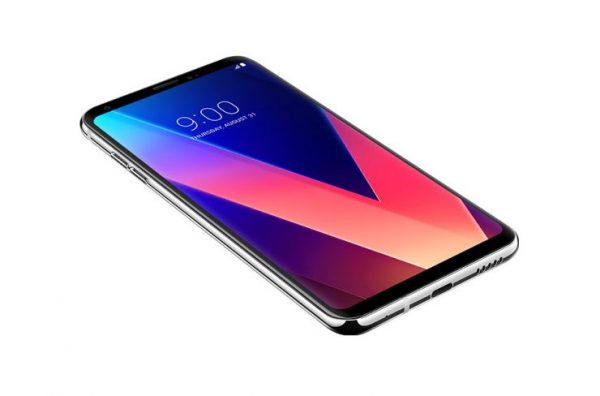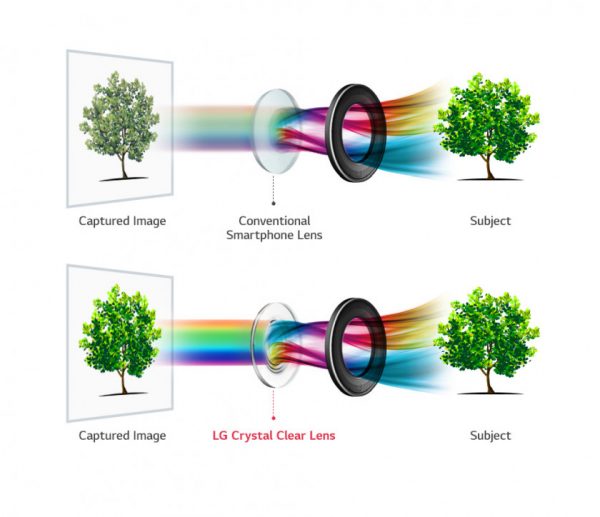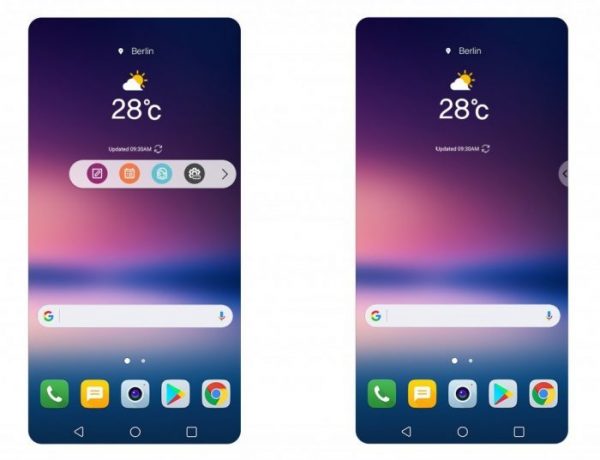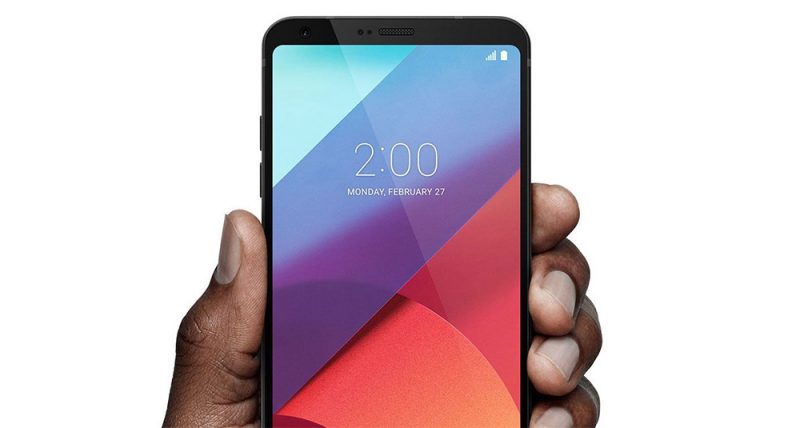The difference between LG V30 and LG V30 Plus: All you need to know!
Back at IFA trade show in Berlin, LG showcased its latest flagship offerings for the third quarter of 2017. Dubbed LG V30 and LG V30 Plus, these handsets come with high-end specifications and beautiful design, that could give other premium handsets in the market a good run for their money. Speaking of money… a renewed LG V30 is only $100 on Amazon right now.
Since LG launched two variants of the same device, it has undoubtedly caused some confusions among the LG fans whether to go for the normal V30 or the Plus variant of the device. And, if you happen to be one among these, you can finally bid adieu to your confusions as this article is about to detail all the differences between the LG V30 and V30+.
LG, this time, ditched what used to be one of the most iconic features of the V-series flagships – a secondary display/ticker. While this bold decision taken by the Korean tech giant has indeed disappointed numerous fans across the globe, the new all-screen design with smaller bezels is a feature to behold.
Sure, LG’s new flagship phones are facing stiff competition from their rivals including the Google Pixel 2 XL, and Samsung Galaxy Note 8. However, it’s worth noting that the LG V30 and LG V30+ are in now way subpar to the rivals, in fact, they might only be better thanks to the addition of Bang & Olufsen (B&O) audio system and f/1.6 camera lens.
LG V30 vs V30+: The only difference is the internal storage space

When it comes to comparing both the devices — LG V30 vs V30 Plus — it’s worth noting that you’d hardly find any differences. Both these smartphones are essentially the same, except for the fact that the latter packs more storage than the former. Well, that’s the only difference between the two new LG flagship variants. The LG V30 comes with 64GB internal storage onboard, while the LG V30 Plus has a higher storage size at 128GB.
While I do agree with the opinion that 128GB of storage is a bit of an overkill for smartphones, there is no denying that there are several users who find it difficult to accommodate all their media stuff in a 64GB phone. So, it’s rather subjective and widely matters upon how much you depend on your phone to get your daily work and entertainment done.
So, if you are a power user who loves to have a plethora of apps, pictures, and videos saved offline on your phone, then we recommend going for the 128GB LG V30 Plus variant.
On the flip side, if you’re anything like me who keeps only work-relevant apps and prefers to keep all the media stuff on the cloud rather than offline on your device, then 64GB LG V30 should be more than enough for all your needs.
Both models feature the same design

Both the V30 and V30+ features the same design with a metal frame and a glass rear.
As expected, the secondary ticker did not make its way to the new LG V30 handsets. Instead, we got an all-screen front design similar to the Galaxy S8. But, don’t you worry LG fans, as LG has found a replacement feature for you – Floating Bar. Well, the new feature, which is a part of the UX 6.0+, can be seen floating on the display for most of the time providing you easy access to recently used apps.
Speaking of the new design, the LG v30, in fact, looks like a love child of Galaxy S8 and LG G6. Well, I would say it looks more like the former than the latter. But, that’s okay with me, as Galaxy S8 is one of the best-looking smartphones that one can get on the market today!
Moving on to the rear side, LG has indeed retained the dual-camera setup and the fingerprint reader, which are quite expected from a V-series smartphone. Mind you, the new LG V30’s camera is not your typical phone camera. One of the sensors in the dual-camera setup features an f/1.6 aperture lens, which was the largest aperture in any smartphone at the time (obviously, it isn’t the case now!).

Besides that, the new camera will use a Crystal Clear Lens in place of the traditional plastic lens, which should be able to deliver greater light-collecting capabilities, thus resulting in sharper pictures. Now to compare, its predecessor came with a wide f/1.8 aperture lens. According to the company, the new upgrade would let in 25 percent more light than the f/1.8 aperture lens used on the LG V20 or iPhone 7 for that matter.
No difference in terms of specs except for the storage
Both the LG V30 and V30 Plus features a 6.0-inch P-OLED screen with a display resolution of 1440 x 2880 pixels. The aspect ratio of the display is 18:9, which is reminiscent of the Galaxy S8 and the LG G6. Besides, the devices are powered by an octa-core Qualcomm Snapdragon 835 processor along with 4GB of RAM.
To keep the light on, the handsets feature a non-removable Li-Po 3300 mAh battery, which supports Quick Charge 3.0 fast charging technology. With the new fast-charging technology, you can get these devices charged 50% in just 36 minutes.
The photography department is handled by a dual 16MP (f/1.6) + 13MP (f/1.9) camera and a 5MP (f/2.2) front-facing camera. They support wireless charging and also comes with IP68 water and dust certification.
The main highlight of the V30 and V30 Plus handsets is, of course, their unrivaled audio technology. In fact, LG has packed Bang & Olufsen (B&O) audio system inside the new devices. Also, thanks to LG for retaining the Hi-Fi Quad DAC on the V30s, the new devices give 50% cleaner audio while you’re listening to music using your earphones. So if you’re an audiophile in the market for a brand new smartphone, then V30 might be your best buy.
| Specs | LG V30 | LG V30 Plus |
| Display | 6.0-inch P-OLED QuadHD+ | 6.0-inch P-OLED QuadHD+ |
| Dimensions | 151.7 x 75.4 x 7.3 mm | 151.7 x 75.4 x 7.3 mm |
| OS | Android 7.1.2 Nougat (upgradable to Oreo) | Android 7.1.2 Nougat (upgradable to Oreo) |
| Processor | Octa-core Snapdragon 835 | Octa-core Snapdragon 835 |
| RAM | 4GB | 4GB |
| Storage | 64GB | 128GB |
| Primary camera | Dual (16MP, f1.6 + 13MP, f1.9) | Dual (16MP, f1.6 + 13MP, f1.9) |
| Front camera | Single 5MP | Single 5MP |
| Battery | 3300mAh | 3300mAh |
Both V-series phones rock a brand new UI

To support the new aspect ratio on the LG V30 devices, LG has brought a new UI called the UX 6.0+. The new user interface indeed packs a plethora of new features to improve the user experience on the forthcoming devices. One of the BEST features – Floating Bar – a semi-transparent bar on the display that shows the recently used apps. This feature is said to be a virtual replacement to the secondary ticker, which won’t be available on the V30s.
In addition to that, LG has also added several other features including Always-on display, Face Recognition, Voice recognition, Haptic Feedback customizations, new camera modes and more.
Note on the release date
Prior to the launch, a report from AndroidAuthority suggested that the devices would go on sale globally starting on September 28. Echoing the report, the pre-order did start on the same day, but it was just restricted to the South Korean markets. The pre-order for the V30 and V30 Plus in the US started on October 5th, and the devices are now pretty much available via every retailer in the country. And now, thanks to the launch of V30S ThinQ and V30S+ ThinQ, the prices of the previous two variants have dropped considerably lower than it did a few months ago.
So, what’s the current price of V30 and V30 Plus?
Obviously, it’s been almost three years since the handsets launched, but LG V30 and V30 Plus are still two Solid Android devices even in 2020. And, the current pricing on the devices makes it even more appealing to own one in 2020, you can now get a refurbished unlocked LG V30 for as low as $100 while a renewed model of bigger LG V30+ can set you back anywhere around $200.




